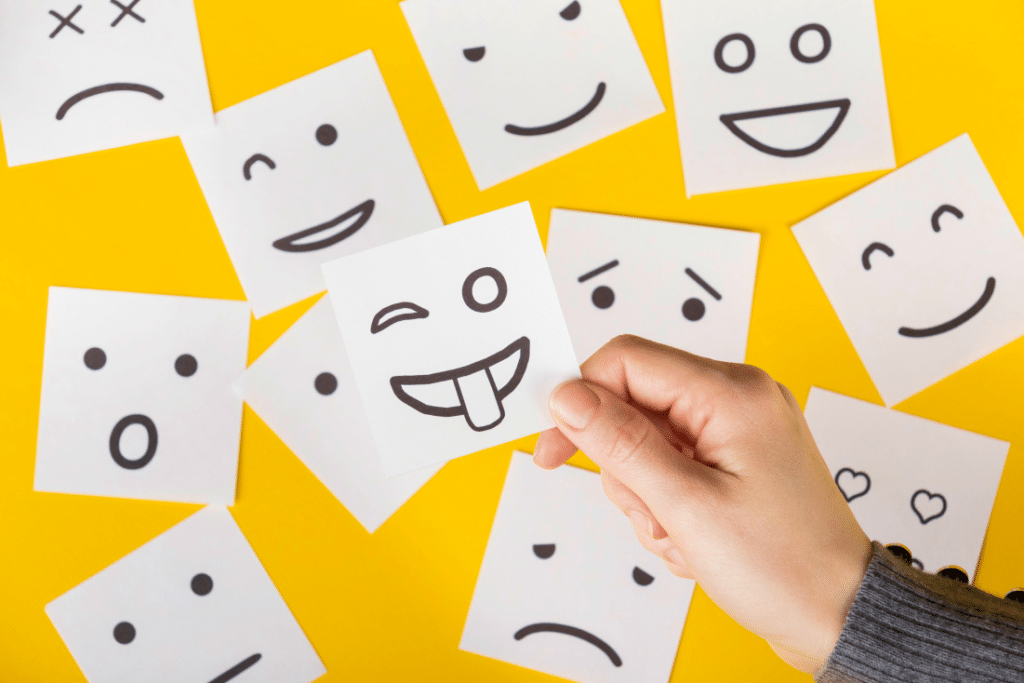Calm Your Feelings: Emotional Regulation Techniques

Emotions are a natural part of the human experience, but sometimes they can feel overwhelming or difficult to manage. Whether you’re dealing with stress, anxiety, or just a general sense of emotional turmoil, it’s important to have a toolbox of emotional regulation techniques to help you navigate these challenges. In this article, we’ll explore a variety of strategies that can help you calm your feelings and improve your overall emotional well-being.
Understanding Emotional Regulation
Emotional regulation is the ability to manage and control our emotional responses to different situations. It’s a crucial skill that allows us to navigate the ups and downs of life with greater ease and resilience. When we’re able to regulate our emotions, we’re less likely to be overwhelmed by them and more likely to respond in a thoughtful, constructive way.
Emotional regulation involves several key components:

- Awareness: Being able to recognize and identify our emotions as they arise.
- Acceptance: Acknowledging and accepting our emotions without judgment or avoidance.
- Modulation: Developing strategies to manage and control our emotional responses.
- Expression: Communicating our emotions in a healthy, constructive way.
Developing these skills can take time and practice, but the benefits are well worth the effort. By learning to regulate our emotions, we can improve our mental health, strengthen our relationships, and enhance our overall quality of life.
Stress Management Techniques
One of the most common challenges when it comes to emotional regulation is managing stress. Stress can trigger a range of intense emotions, from anxiety and frustration to anger and sadness. Fortunately, there are several effective stress management techniques that can help you calm your feelings and regain a sense of control.
Deep Breathing
Deep breathing is a simple yet powerful technique for reducing stress and anxiety. When we’re feeling overwhelmed, our breathing often becomes shallow and rapid, which can exacerbate our emotional state. By taking a few minutes to focus on slow, deep breaths, we can activate the parasympathetic nervous system, which is responsible for the “rest and digest” response.
To practice deep breathing, find a quiet, comfortable place to sit or lie down. Inhale slowly through your nose, feeling your belly expand. Hold the breath for a few seconds, then exhale slowly through your mouth. Repeat this process for several minutes, focusing on the sensation of the breath moving in and out of your body.
Progressive Muscle Relaxation
Progressive muscle relaxation (PMR) is another effective stress management technique that involves systematically tensing and releasing different muscle groups in the body. This can help to reduce physical tension and promote a sense of overall relaxation.
To practice PMR, start by tensing the muscles in your feet and toes, holding for a few seconds, then releasing. Gradually work your way up through the body, tensing and releasing each muscle group. This can be a great way to unwind after a stressful day or to help you fall asleep at night.
Mindfulness Meditation
Mindfulness meditation is a powerful tool for emotional regulation, as it helps us to stay present and focused on the here and now. By cultivating a non-judgmental awareness of our thoughts, feelings, and physical sensations, we can learn to observe our emotions without getting caught up in them.

There are many different mindfulness meditation techniques, but a simple one to start with is to find a quiet, comfortable place to sit and focus on your breath. Whenever your mind wanders, gently bring your attention back to the sensation of the breath moving in and out of your body.
Coping Mechanisms
In addition to stress management techniques, it’s important to have a repertoire of coping mechanisms that you can turn to when you’re feeling overwhelmed or distressed. Coping mechanisms are the strategies we use to manage difficult emotions and situations, and they can take many different forms.
Journaling
Writing in a journal can be a powerful way to process and release emotions. Whether you choose to write about your thoughts and feelings, or simply engage in free-form writing, the act of putting pen to paper can be incredibly cathartic.
Creative Expression
Engaging in creative activities, such as art, music, or dance, can be a wonderful way to channel your emotions in a constructive way. These forms of expression can help you to access and release emotions that may be difficult to put into words.
Social Connection
Spending time with supportive friends and loved ones can be a great way to cope with difficult emotions. Talking about what you’re going through, or simply enjoying each other’s company, can help to alleviate feelings of isolation and provide a sense of comfort and belonging.
It’s important to choose your social connections wisely, however, as not all relationships are equally supportive. Surround yourself with people who are empathetic, non-judgmental, and willing to listen without offering unsolicited advice.
Physical Activity
Engaging in physical activity can be a powerful way to manage emotions. Exercise releases endorphins, which can improve your mood and help to reduce feelings of stress and anxiety. Whether it’s going for a brisk walk, hitting the gym, or trying a new sport or activity, moving your body can be a great way to work through difficult emotions.
Emotional Intelligence
Emotional intelligence (EQ) is the ability to recognize, understand, manage, and reason with emotions. It’s a crucial skill for emotional regulation, as it allows us to better understand our own emotions and those of others.
Developing emotional intelligence involves several key components:
- Self-awareness: Being able to recognize and understand your own emotions, as well as the factors that influence them.
- Self-regulation: The ability to manage and control your emotional responses in a healthy, constructive way.
- Empathy: The capacity to understand and share the feelings of others.
- Social skills: The ability to effectively communicate and interact with others in a way that fosters positive relationships.
By cultivating emotional intelligence, you can improve your ability to regulate your emotions and navigate the complex social landscape of life.
Mental Health Strategies
Emotional regulation is closely tied to our overall mental health, and there are a number of strategies that can help to support and improve our mental well-being.
Therapy
Seeking professional help from a therapist or counselor can be an incredibly valuable tool for emotional regulation. Therapists can help you to identify the root causes of your emotional challenges, develop coping strategies, and work through any underlying mental health issues.
Medication
In some cases, medication may be necessary to help manage mental health conditions that are impacting your ability to regulate your emotions. This could include medications for conditions like anxiety, depression, or bipolar disorder.
Lifestyle Changes
Making positive changes to your lifestyle can also have a significant impact on your mental health and emotional regulation. This can include things like getting enough sleep, eating a healthy diet, and engaging in regular exercise.
Anxiety and Depression Management
Anxiety and depression are two of the most common mental health challenges that can impact our ability to regulate our emotions. Fortunately, there are a number of strategies that can help to manage these conditions and improve emotional regulation.
Anxiety Management Techniques
Techniques like deep breathing, progressive muscle relaxation, and mindfulness meditation can be particularly helpful for managing anxiety. Additionally, cognitive-behavioral therapy (CBT) can be an effective way to challenge and reframe anxious thoughts and behaviors.
Depression Management Techniques
For depression, strategies like exercise, social connection, and cognitive-behavioral therapy can be helpful. Antidepressant medication may also be necessary in some cases.
It’s important to note that everyone’s experience with anxiety and depression is unique, and it may take some trial and error to find the right combination of strategies that work for you.
Mindfulness Techniques
Mindfulness is a powerful tool for emotional regulation, as it helps us to stay present and focused on the here and now. By cultivating a non-judgmental awareness of our thoughts, feelings, and physical sensations, we can learn to observe our emotions without getting caught up in them.
Mindful Breathing
As mentioned earlier, deep breathing is a simple yet effective mindfulness technique that can help to calm the mind and body. By focusing on the sensation of the breath moving in and out, we can anchor ourselves in the present moment and reduce feelings of stress and anxiety.
Body Scan
Another mindfulness technique is the body scan, which involves systematically tuning in to the sensations in different parts of the body. This can help to increase our overall body awareness and promote a sense of relaxation.
Mindful Walking
Mindful walking is a form of meditation that involves paying attention to the sensations of the body as you move. This can be a great way to get some exercise while also practicing mindfulness.
Emotional Regulation Skills
Developing emotional regulation skills is an ongoing process, but there are several key skills that can help you to better manage your emotions:
- Emotional Awareness: Being able to recognize and label your emotions as they arise is the first step in emotional regulation. This involves tuning in to the physical sensations, thoughts, and behaviors that accompany different emotions.
- Emotional Acceptance: Rather than trying to suppress or avoid difficult emotions, it’s important to learn to accept them. This doesn’t mean you have to like or agree with the emotion, but rather acknowledge it and allow it to run its course.
- Emotional Expression: Finding healthy ways to express your emotions, such as through journaling, art, or talking to a trusted friend, can help to release pent-up feelings and prevent them from becoming overwhelming.
- Emotional Regulation Strategies: Developing a toolbox of emotional regulation strategies, such as deep breathing, mindfulness, and problem-solving, can help you to manage your emotions in the moment.
- Emotional Resilience: Building emotional resilience, or the ability to bounce back from setbacks and challenges, can help you to navigate difficult emotions with greater ease and adaptability.
- Emotional Empathy: Developing empathy for yourself and others can help to foster more compassionate and understanding responses to emotional experiences.
By cultivating these emotional regulation skills, you can improve your overall emotional well-being and enhance your ability to navigate the ups and downs of life.
Putting it All Together
Emotional regulation is a complex and multifaceted skill, but by incorporating a variety of techniques and strategies, you can develop a more robust toolkit for managing your emotions. Whether it’s deep breathing, mindfulness meditation, or seeking professional help, the key is to find what works best for you and to be patient and persistent in your practice.
Remember, emotional regulation is not about eliminating or suppressing your emotions, but rather about learning to acknowledge, accept, and manage them in a healthy and constructive way. By doing so, you can improve your mental health, strengthen your relationships, and enhance your overall quality of life.
Here is a table summarizing some of the key emotional regulation techniques discussed in this article:
| Technique | Description |
|---|---|
| Deep Breathing | Slow, deep breaths that activate the parasympathetic nervous system and promote relaxation. |
| Progressive Muscle Relaxation | Systematically tensing and releasing different muscle groups to reduce physical tension. |
| Mindfulness Meditation | Cultivating a non-judgmental awareness of thoughts, feelings, and physical sensations in the present moment. |
| Journaling | Writing about thoughts and emotions to process and release them. |
| Creative Expression | Engaging in artistic activities like art, music, or dance to channel emotions. |
| Social Connection | Spending time with supportive friends and loved ones to alleviate feelings of isolation. |
| Physical Activity | Exercising to release endorphins and manage stress and anxiety. |
Remember, the key to effective emotional regulation is to experiment with different techniques and find what works best for you. With practice and persistence, you can develop the skills and strategies you need to calm your feelings and improve your overall emotional well-being.
“The greatest weapon against stress is our ability to choose one thought over another.” – William James


